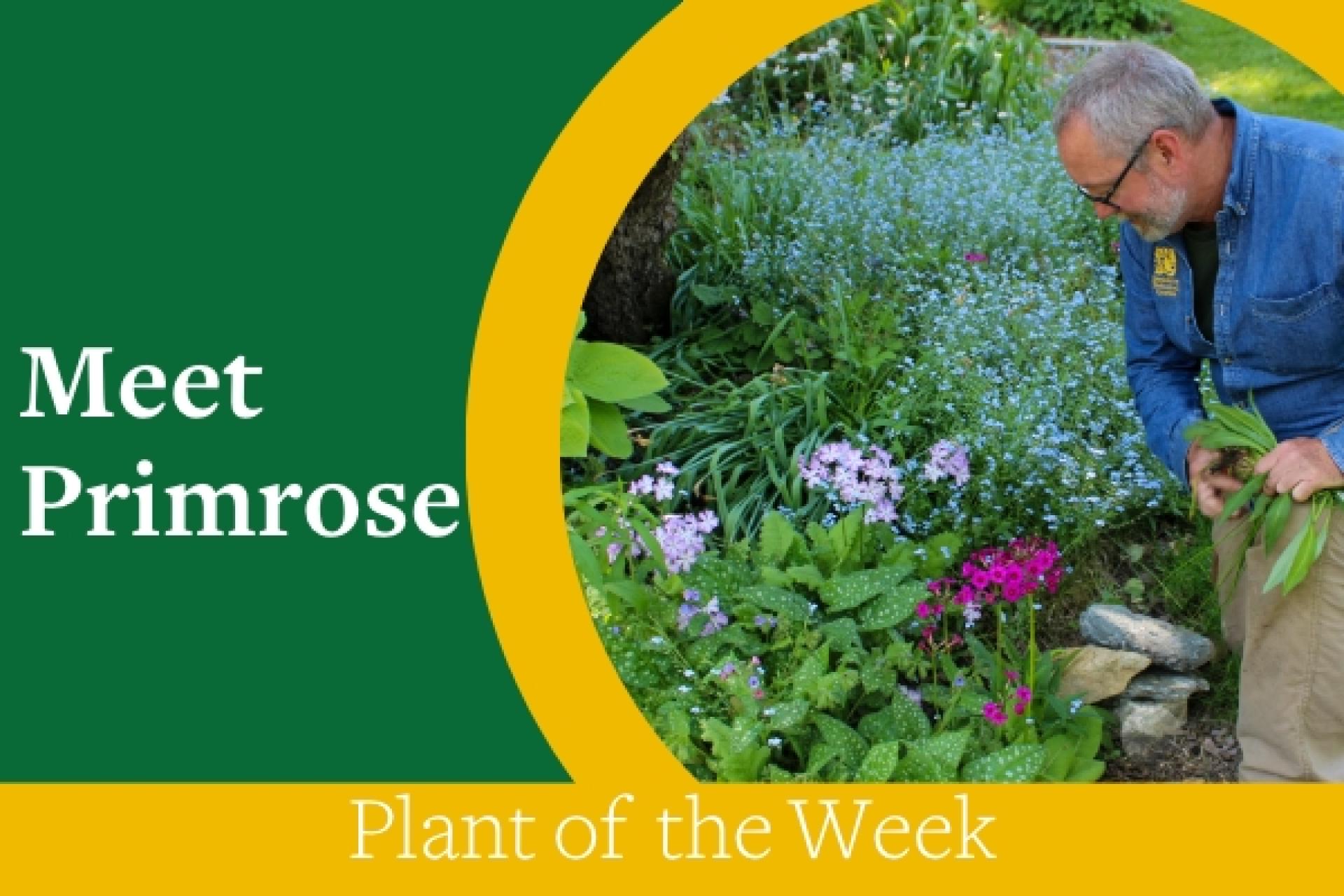You are here
The Primrose Walk in Springtime
The Primrose Walk in Springtime
By Ruth Hanavan
In a shady corner of the Berkshire Botanical Garden, past the whimsical topiary collection in Lucy's Garden, lies the Primrose Walk, a sheltered, woodland area where primula — the primrose — bloom gaily on this late Spring day. One of the first flowers to bloom in Spring, primrose presents itself in an array of colors, and in the words of Director of Horticulture Eric Ruquist, "It is just gorgeous." On a recent, warm day, the Primrose Walk was cool and shady, the colorful, showy blooms contrasting with the bright blue myositis (forget-me-nots) and yellow pakera nestled into the garden beds. Eric points out Primula seiboldii, which comes in a variety of colors and is "one of the best woodland primulas." This version, a light purple and white flower, is surrounded by bright pink primrose and a selection of hosta. So what's so special about primrose?
According to Stewart Edelstein's book An Alphabetical Romp Through the Flora of Berkshire Botanical Garden, Primula has more than 400 species, with flowers in blue, green, red, orange, white, pink, and yellow. Its name derives from the Latin primus, meaning first, which is an accurate description for this early-bloomer which is putting on a show this late May afternoon. The Primrose Walk at the Berkshire Botanical Garden has more than a dozen varieties of primrose, with plans for many more, as the Horticulture team works on the merger of the Hosta Garden and the Primrose Walk into a unified woodland garden.
"Among the additional primula planned for the garden is a Primula veris Hose-in-Hose, which comes in a beautiful, bright yellow," Eric explains. "It's unique in that it looks like a flower within a flower, and is a very special plant for us to have here."
If you are interested in seeing the blooming Primrose Walk, though, you should get here quickly; this spring-blooming area won't be here for long! Watch Stewart Edelstein's video about Primula.
Help Our Garden Grow!
Your donation helps us to educate and inspire visitors of all ages on the art and science of gardening and the preservation of our environment.
All Donations are 100 percent tax deductible.



